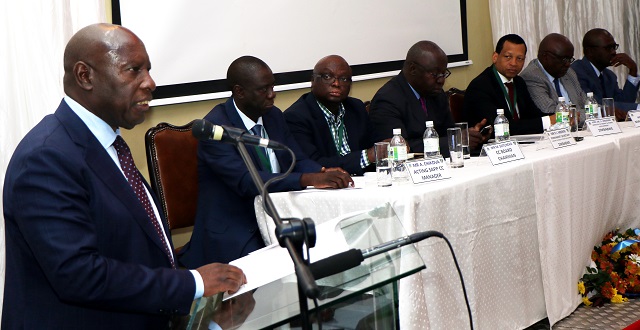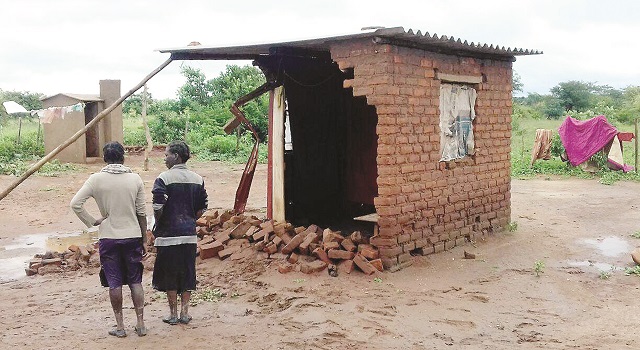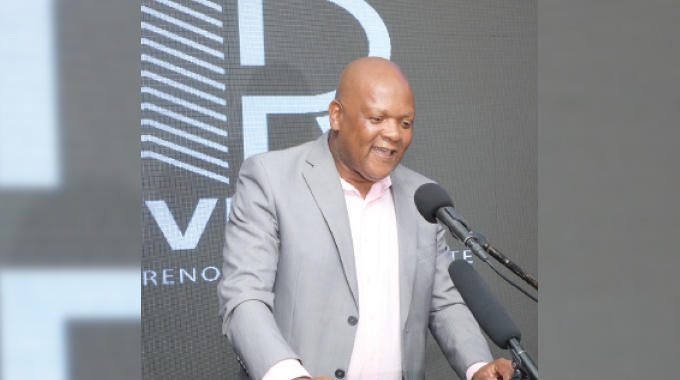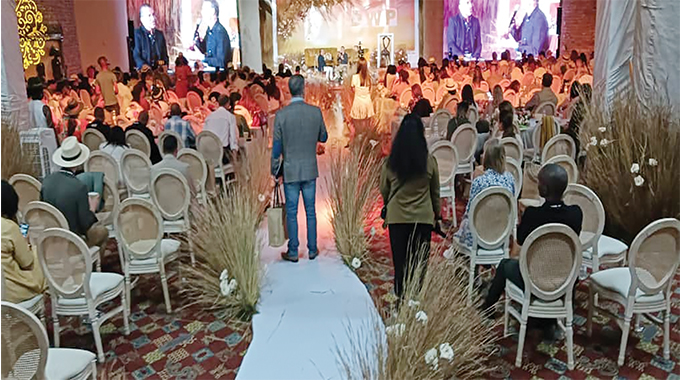SADC ups power: Targets 30 000MW new generation capacity


Minister of Energy and Power Development Dr Samuel Undenge addresses delegates as he officially opens the SAPP conference in Bulawayo yesterday. — Picture by Eliah Saushoma
Oliver Kazunga, Senior Business Reporter
THE Southern African Development Community (Sadc) will increase its electricity generation capacity by 30 000MW from new projects in the next five years, a Cabinet Minister said yesterday.
The regional bloc has an installed generation capacity of 58 000MW but is producing 47 000MW against demand of 53 000MW, which creates a supply deficit of 6000MW.
Officially opening the Southern Africa Power Pool (SAPP) conference that is underway in Bulawayo yesterday, the Minister of Energy and Power Development, Dr Samuel Undenge, said the region has been operating under a generation supply deficit for almost a decade and measures were being put in place to meet demand.
“The current installed generation capacity in the SAPP amounts to 58 000MW. Out of this, about 47 000MW is operating against a demand of around 53 000MW, giving an operational deficit of around 6 000MW,” said the minister.
He lamented the slow pace of commissioning of new projects but hoped that the supply deficit would likely be overcome by around 2022.
“We take cognisance of and applaud the various efforts being put by all Sadc member states that will result in around 30 000MW of new generation capacity being commissioned between 2017 and 2022,” said Dr Undenge.
Among the new projects is the proposed $4 billion Batoka Gorge project done by Zimbabwe and Zambia that is set to add up to 2400MW, the 600MW Hwange units 7 and 8 expansion and the 300MW Kariba South expansion in which Zambia is also undertaking the same project. Several projects are also being discussed in the renewable energy sector such as gas.
Dr Undenge noted that the prevailing power deficit in Sadc required collective efforts and quick action in implementing resolutions on power generation and transmission projects as stipulated in SAPP plans.
He said while notable progress has been made in implementing generation projects, the same could not be said of transmission projects. Dr Undenge said transmission projects were critical in evacuating power from generation sources to various load centres within the region.
“In 2016 alone, 66 percent of the energy that was matched and available for trading on the competitive market could not be traded due to transmission constraints.
“In addition, SAPP has three of its members (Angola, Malawi and Tanzania) that are non-operating and still not connected to the rest of the SAPP grid,” he said.
The minister said a number of transmission projects have been identified to remove transmission congestion and interconnect the above three members but the challenge remained on the implementation front.
He, however, said some strides had been made in addressing the regional supply and demand concerns despite challenges. Since 2009, Dr Undenge said, traded volumes on the SAPP competitive market have been on a positive growth trajectory, realising over $70 million last year alone.
In 2016 the region established the Sadc Centre for Renewable Energy and Energy Efficiency (SACREE) in Namibia, which the minister said was a clear demonstration that energy efficiency and renewable energy were areas that Sadc values.
“SAPP initiatives on demand side management assisted a lot in minimising the impact of load shedding during our worst generation supply deficit period. I therefore implore SAPP and SACREE to work together in driving the Sadc agenda on renewable energy and energy efficiency,” he said.
The minister said Zimbabwe was working on increasing its supply through the implementation of projects such as the 300MW Kariba South Extension project, which is already underway and is expected to be completed between December this year and first quarter 2018.
“We have also set up a 200MW emergency diesel power plant, which enabled us to maintain power supply without load shedding in 2016.
“We are expecting financial closure on the Hwange Expansion project soon. This should add an additional capacity of 600MW,” he said.
Dr Undenge said feasibility studies for the $4 billion Batoka Hydro Power Plant were almost complete and mobilisation of resources was set to begin before the end of the year.
He said the Government and independent power producers were also working on other energy initiatives such as coal-fired, hydro and solar PV plants and sourcing of finance for the projects was at various stages.
The minister said Zimbabwe intends to take advantage of its central location in the SAPP grid by providing power wheeling services as well as exporting electricity to the other Sadc member states.
“We are, therefore, participating in the development of the Mozambique-Zimbabwe-South Africa (Mozisa) and the Zimbabwe-Zambia-Botswana-Namibia (Zizabona) interconnectors. Zesa is strengthening its national transmission capacity by constructing two 400KV power lines, Triangle-Orange Grove in the eastern part of the country and Alaska-Sherwood in the central region,” he said.
Dr Undenge said significant progress has also been made in developing renewable energy policy. The policy should be finalised and launched this year.
The solar water heating programme that was launched last year, which ensures that all new houses being constructed have solar water geysers, is in line with the Regional Renewable Energy and Energy Efficiency Strategy and Action Plan.
The regional meeting began on Tuesday and ends tomorrow.
@okazunga











Comments